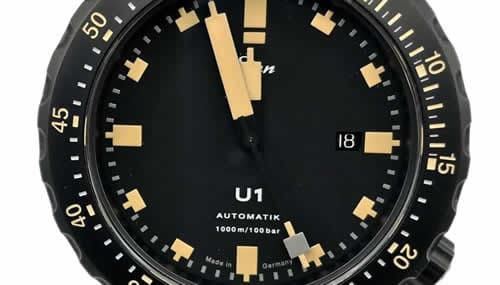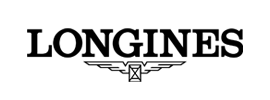
Watch Certification: COSC and Others Explained
I remember the first time I realized just how important watch accuracy was. I was just starting out on my watch journey, still exploring the world of cheaper homage watches with low-end Chinese movements. As far as I was concerned, if it slightly resembled an Omega Seamaster and ticked, it probably was good enough to reliably depend on. Little did I know.
I remember wearing the watch for a few days—not really thinking about checking the accuracy of its timekeeping. It was ticking, after all, so that meant it was working. A week later, I was ten minutes late for a college course I was teaching. Ten minutes late? How the heck did that happen?
Well, it turns out the watch was losing about a minute and a half per day. A quick trip to my jeweler, and he adjusted the watch so that it wasn’t so inaccurate. I learned my lesson: Buy once, cry once. Chinese “off-brands” are able to sell watches so cheaply because the quality control and fine adjustment aren’t quite there—if present at all!
The lesson here is that accuracy matters. Never forget!
The COSC Chronometer Certification

In the mid-20th century, as the demand for accurate timepieces grew across the globe, the Swiss sought to create an independent timekeeping standard that only the best quality movements could achieve.
We call these watches COSC-certified or chronometers. COSC, as is defined by the watch industry today, is the rigorous timekeeping standard created by the Official Swiss Chronometer Testing Institute—for you language aficionados, also known as Contrôle Officiel Suisse des Chronomètres—in 1973.
This “ISO 3159” standard subjects mechanical movements (both automatic and manual winding) to a 15-day testing process, which measures accuracy across five positions and three temperatures. If the watch maintains a daily timekeeping rate of at least -4/+6 seconds per day, then it receives the badge of honor: COSC certified.
Other Chronometer Certifications
While “COSC” is the standard by which all others are measured today, it actually wasn’t the first “chronometer” certified movement, nor was it the last! The following is a list of timekeeping standards used both within and without Switzerland, with the majority still in use as of my writing this article!
Superlative Chronometer
The King wears the crown, after all. That’s right, folks, Rolex is the earliest on this list to offer a Chronometer standard better than the COSC Chronometer certification. In the 1950s, Rolex began offering Superlative Chronometer watches to differentiate themselves from other Swiss competitors and establish themselves as a leader in precision and reliability.
And although Rolex had been releasing COSC-level watches for decades prior, this was done through various independent observatories, not by the aforementioned body, which became the central authority, standardizing it under one unified body in 1973.
It’s worth noting that Rolex didn’t only offer “better” than Chronometer timekeeping—the brand absolutely crushed the standard, with their Superlative Chronometer watches all maintaining accuracy of at least +/- 2 seconds per day. Today, the entire Rolex catalog of watches comes standard with Superlative Chronometer accuracy.
Like I said—they wear the crown for a reason!
METAS Chronometer
As I’m typing this, I am staring at my Omega Railmaster—at the small white lettering that reads, “Master Chronometer.” Never to be outdone by Rolex, in 2015, Omega set an even more rigorous standard, claiming, “To own a MASTER CHRONOMETER is to be confident that your watch has been certified not once – but twice!”
Indeed, Omega does certify their METAS watches twice: once with Contrôle Officiel Suisse des Chronomètres, ensuring it meets standard COSC parameters and is accurate to -4/+6 seconds per day, and a second time by METAS (Swiss Federal Industry of Metrology), where it undergoes an additional and more rigorous 10 days of testing to ensure the watch can withstand magnetic fields up to 15,000 gauss, maintain an accuracy of 0/+5 seconds per day after casing, be tested for water resistance to its specified depth, and have its power reserve verified to match the advertised duration.
What’s more interesting—and unlike standard COSC watches and even Rolex’s Superlative Chronometer watches—is the fact that Omega offers full transparency, available online, for the results of each and every METAS-certified watch they sell. It’s pretty cool to be able to log onto the site and see your individual watch’s results, I have to admit.
German Chronometer Standard
Enter the Germans. No really—whenever great horological houses are discussed, it’s always the big three that are mentioned: Switzerland, Germany, and Japan. Of course, great watches, both entry-level and luxury, come from a great host of nations, like anything else. But Germany, especially the city of Glashütte, has been producing highly accurate timepieces for hundreds of years.
The German Chronometer Standard was first introduced in the 20th century under the “DIN 8319” standard, which in actuality closely mirrored COSC’s ISO 3159 standards. The difference is that DIN 8319 only tests fully cased watches, whereas ISO 3159 tests movements alone.
For me, it always felt a bit like, “Hey. We can do this too. Our standards are at least equal to, if not better than the Swiss!” Either way, you can have peace of mind knowing that if you have a German Chronometer Standard watch, you will have superb accuracy, durability, and craftsmanship present.
Grand Seiko Special Standard
If you’ve heard of Grand Seiko—and if you haven’t, have you been living under a damn Rock?—you know that they are renowned for their dials, meticulous craftsmanship, and their Spring Drive movements.
These hybrid quartz-mechanical movements are accurate to +/-15 seconds per month, but they do use quartz oscillators and, therefore, do not fall under the purview of COSC or any mechanical movement standard. You might be asking yourself, then, what in the world is “Grand Seiko Special Standard?”
Here at Exquisite Timepieces, we aren’t only in the business of selling watches but also informing our audience about horological history and innovation! In 1960, the first Grand Seiko had “Chronometer” on the dial as an indication of its superior accuracy, rivaling the standard set by the Bureaux Officiels de Contrôle de la Marche des Montres of the time.
This only lasted for 6 years, however, and in 1966, Grand Seiko introduced its own standard: Grand Seiko Special Standard. These mechanical movements would undergo a 17-day vigorous testing period, in which the movements would be subjugated to temperature and position variation. Watches would only pass and be designated with Grand Seiko’s Special Standard if they had precision rates of at least +4/-2 seconds per day!
Qualité Fleurier Standard
In the world of Haute horology, or high horology, the Qualité Fleurier Standard is the absolute gold standard. Established in 2001 in Fleurier, Switzerland, it is considered to be one of the most prestigious and demanding certifications in the industry.
Not only does it measure the accuracy of a timepiece, but also the reliability, durability, and finishing of both the movement and the timepiece.
The Qualité Fleurier Standard also requires that all components of the timepiece, from the dial to the case, hands, and indices, be manufactured and assembled in Switzerland. It is worth noting that the movement accuracy must meet ISO 3159 (COSC) standards.
Because of these stringent requirements, only a handful of high-end Maisons qualify for the Qualité Fleurier Standard—watches like Parmigiani Fleurier, Chopard, and Bovet.
Patek Philippe Seal
Arguably the centerpiece of “The Holy Trinity” of watchmaking, Patek Philippe holds a venerable “grail” status amongst most enthusiasts. I recently had the opportunity to try a platinum World Time on the wrist.
It was my first hands-on Patek Philippe experience, and the whole thing lasted about 20 seconds but left me thinking about that watch in the days, weeks, and months to come. It was beautiful.
In 2009, Patek Philippe introduced their own in-house certification, replacing the Geneva Seal—a historic sign of Swiss watchmaking excellence. Going beyond the stringent requirements of the Geneva Seal, the Patek Philippe Seal covers the entire watch: case, dial, hands, bracelet, movement finishing, and performance.
Explore the
Biggest Pre-Owned Collection of Luxury Watches
We already know how “perfect” Patek Philippe’s are in terms of finishing, but the Patek Philippe Seal also calls for a greater than COSC accuracy of -3/+2 seconds per day. Make no mistake, folks—this is Patek proclaiming loud and clear for all those to hear, “We set our own standards of excellence.”
Why is Chronometer Certification Important?
If you consider some of the tragic accidents that happened in the locomotive world, leading to better accuracy in American horology, and the needs for soldiers in battle to have accurate time telling, and for pilots to measure fuel consumption and flight times, and for racecar drivers to accurately time lap times to measure performance, and—I’m guessing you are starting to get the point here.
Yes, having accurate timekeeping capabilities is a tenet of contemporary societal needs. And in the age of digital watches, smartwatches, and cellphones, the onus is on the titans of the horological industry to offer as accurate a mechanical watch as possible!
After all, you can’t expect people to spend boatloads of cash for a watch that isn’t reliable. The Chronometer certification—in whatever aforementioned guise it is offered in—is a worry-free guarantee to the customer: you won’t be late. We have your back.
Conclusion
While having superbly accurate timepieces is important, it’s equally important to discuss some of the costs associated with more stringent accuracy. Timepieces with COSC certifications are usually more expensive than their counterparts without.
Nevertheless, I have some non-COSC certified timepieces that are just as accurate, or even more accurate than the chronometers in my staple. It’s also worth noting that if you rotate your watches daily, or even weekly, COSC becomes less important, as you are constantly switching out watches and resetting the times.
In the end, what matters most is that a timepiece aligns with your needs and passions as a collector. After all, a watch isn’t just about telling time—it’s about telling your story.
About Exquisite Timepieces
Established in 1998, Exquisite Timepieces is your one-stop shop for all things luxury watches! We are an authorized dealer for 60+ luxury watch brands including Omega, Hublot, Seiko, & Longines! We are proud to showcase one of the world’s largest pre-owned watch collections, including renowned brands like Rolex and Patek Philippe. Check out our brand new watch arrivals here and popular pre-owned listings here.




















